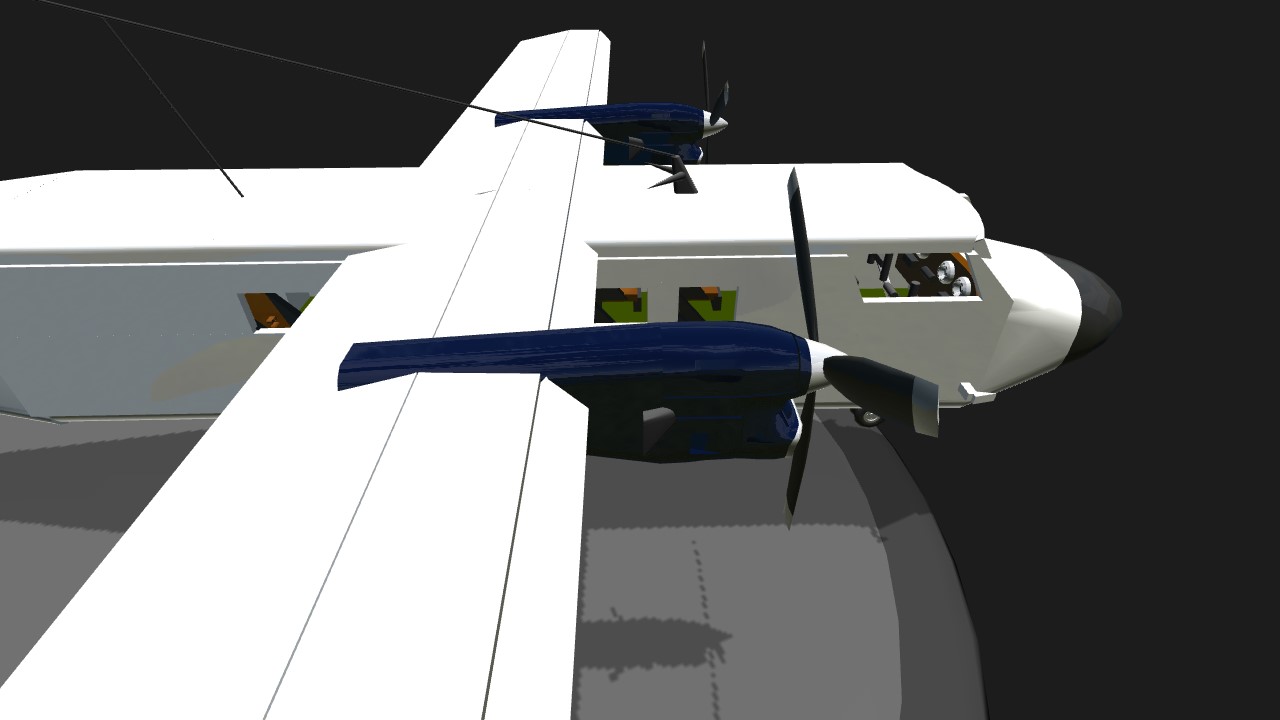Full interior go easy on the controls this isnt a stuntplane. The de Havilland Canada DHC-6 Twin Otter is a Canadian 19-passenger STOL (Short Takeoff and Landing) utility aircraft developed by de Havilland Canada and currently produced by Viking Air. The aircraft's fixed tricycle undercarriage, STOL abilities and high rate of climb have made it a successful cargo, regional passenger airliner and MEDEVAC aircraft. In addition, the Twin Otter has been popular with commercial skydiving operations, and is used by the United States Army Parachute Team and the United States Air Force's 98th Flying Training Squadron.Development of the aircraft began in 1964, with the first flight on May 20, 1965. A twin-engined replacement for the single-engined DHC-3 Otter retaining DHC's renowned STOL qualities, design features included double-slotted trailing edge flaps and ailerons that work in unison with the flaps to boost STOL performance. The availability of the 550 shp (410 kW) Pratt and Whitney Canada PT6A-20 propeller turboprop in the early 1960s made the concept of a twin more feasible. To bush operators, the improved reliability of turboprop power and the improved performance of a twin-engined configuration made it an immediately popular alternative to the piston-powered Otter which had been flying since 1951.
The first six aircraft produced were designated Series 1, indicating that they were prototype aircraft. The initial production run consisted of Series 100 aircraft, serial number seven to 115 inclusive. In 1968, Series 200 production began with serial number 116. Changes made at the beginning of Series 200 production included improving the STOL performance, adding a longer nose that was equipped with a larger baggage compartment (except for aircraft fitted with floats) and fitting a larger door to the rear baggage compartment. All Series 1, 100 and 200 aircraft and their variants (110, 210) were fitted with the 550 shaft-horsepower PT6A-20 engines.
In 1969, the Series 300 was introduced, beginning with serial number 231. Both aircraft performance and payload were improved by fitting more powerful PT6A-27 engines. This was a 680 hp (510 kW) engine that was flat-rated to 620 hp (460 kW) for use in the Series 300 Twin Otter. The Series 300 proved to be the most successful variant by far, with 614 Series 300 aircraft and their sub-variants (Series 310 for United Kingdom operators, Series 320 for Australian operators, etc.) sold before production in Toronto by de Havilland Canada ended in 1988. After Series 300 production ended, the remaining tooling was purchased by Viking Air of Victoria, British Columbia, who manufacture replacement parts for all of the out-of-production de Havilland Canada aircraft. On February 24, 2006, Viking purchased the type certificates from Bombardier Aerospace for all the out-of-production de Havilland DHC-1 through DHC-7 aircraft.[3] The ownership of the certificates gives Viking the exclusive right to manufacture new aircraft.
On July 17, 2006, at the Farnborough Air Show, Viking Air announced its intention to offer a Series 400 Twin Otter. On April 2, 2007, Viking announced that with 27 orders and options in hand, it was restarting production of the Twin Otter, equipped with a more powerful Pratt & Whitney Canada PT6A-34 engine.[4] As of November 2007, 40 firm orders and 10 options had been taken and a new final assembly plant established in Calgary, Alberta.[5][6] Zimex Aviation of Switzerland received the first new production aircraft, serial number 845, in July 2010.[7][8] As of summer 2014, Viking has built 55 new aircraft at their Calgary facility. Serial number 900 took flight in spring 2014. The production rate as of summer 2014 was approximately 24 aircraft per year. In April 2015, Viking announced a reduction of the production rate to 18 aircraft per year.[9] On June 17, 2015 Viking further announced a partnership with a Chinese firm, Reignwood Aviation Group. The group will purchase 50 airplanes and become the exclusive representatives for new Series 400 Twin Otters in China.
Major changes introduced with the Series 400 include Honeywell Primus Apex fully integrated avionics, deletion of the AC electrical system, deletion of the beta backup system, modernization of the electrical and lighting system, and use of composites for non-load-bearing structures such as doors.[10]
Specifications
General Characteristics
- Successors 5 airplane(s)
- Created On iOS
- Wingspan 77.1ft (23.5m)
- Length 65.5ft (20.0m)
- Height 22.5ft (6.9m)
- Empty Weight 8,238lbs (3,737kg)
- Loaded Weight 33,428lbs (15,163kg)
Performance
- Power/Weight Ratio 0.048
- Horse Power/Weight Ratio 0.179
- Wing Loading 13.9lbs/ft2 (67.8kg/m2)
- Wing Area 2,406.8ft2 (223.6m2)
- Drag Points 8204
Parts
- Number of Parts 241
- Control Surfaces 7
- Performance Cost 839







@Cedy117 wall of text much?
Make a dahs 8 300
@Cedy117
Don't they fly one of these ? @JacobHardy64
U.S. Army Parachute team Golden Knights
@AlphaOneIndustries @UglyBull thanks guy glad you like it
All the interior views and details, this is amazing!
Thanks @Cjredwards
Those wings at cool!
Thanks @TheLatentImage
This is great, that cabin is awesome. Really immersive. I like what you did with the wings there too. Nice work buddy.